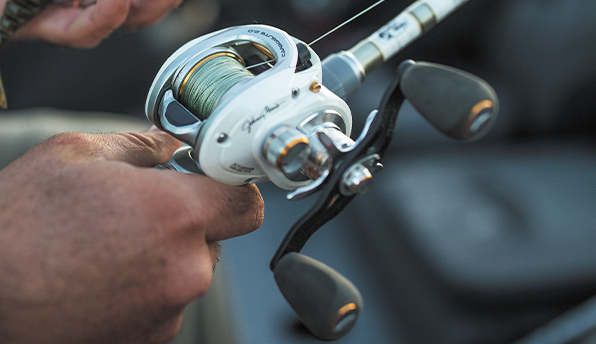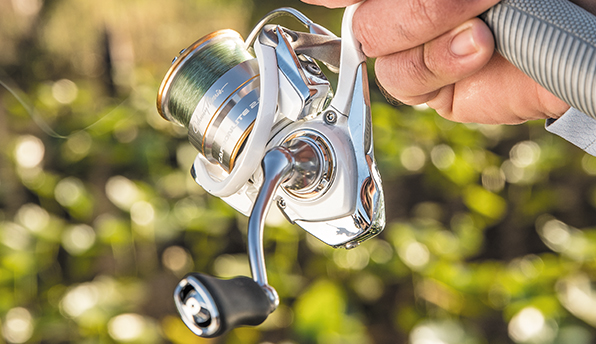
The Reel Difference Between Baitcasting & Spinning Reels

Although baitcasting and spinning reels are different from each other, there has been an eternal bias on which to use or which is better. A baitcaster launches heavier lures farther with accuracy, and a spinning reel is better for fishing with lighter lures.
Baitcasting
Pros
- Lightweight and durable
- Casting accuracy
- Holds heavier lines
- Strong and smooth drag capabilities
- Handles heavy and large game fish
- Highly customizable
- Hauling power
Cons
- Falls in the premium category
- Requires experience to handle
- It could be tricky to switch between left and right orientations
A baitcasting reel is the best choice to strategically drop your line in a hot spot or a more crowded area. Owing to its qualities, a baitcaster is powerful enough for an offshore fishing reel. The reel uses the dominant hand to hold the rod to cast. The angler switches hands to reel in the cast so the dominant hand can control it. While casting, many anglers use their thumb to break and control the line to prevent nesting or backlash.

How to Use Baitcasting Reels
To cast a fishing line, follow the steps below for a successful cast:
- Hold the rod with the spool facing upwards.
- Place your thumb on the line and press the spool button.
- Move your elbow back up over your shoulder.
- Sweep the rod tip forward to 5 o'clock while holding the spool with your thumb.
- Feather the spool until the lure reaches its destination or hits the water.
- Remember to use your thumb to control the spool during casting.
Spinning Reels
Pros
- Affordable
- Easy to use for all levels of experience
- No backlash from the spool moving too quickly
- Easy to cast near the shoreline
- Easy to switch from left to right-hand orientations
- Easy to add more line capacity
Cons
- Bulky reel
- Not as durable and sturdy
- Prone to line tangling and twisting
- Less drag ability
- No distance control
The Spinning reel is beginner-friendly and well-suited for testing the waters. With just a button, the reel allows you to toggle between locked and free spools. As the mechanisms are covered inside the metal/plastic casing, tangles go unnoticed. Not only would this create a disturbance, but the water and debris trapped inside would shorten the lifespan of the reel.

How to Use a Spinning Reel
- Press and hold the button to keep the line-locked when casting.
- When the casting reaches its peak, release the button to release the line.
- Your casting position and weight of the lure will create momentum for the line to fly in the direction the rod points.
Baitcasting Reel vs. Spinning Reel
Baitcasting Reel
Skill Level
Intermediate to expert fishers as it takes time to master
Casting Distance
Longer and more accurate casting distance
Best Line Type
Braided and heavier lines
Best Lure Type
Heavier-weight lures
Best Lure Type
Heavier-weight lures
Ideal Fish Size
Large, tricky, and heavy fish
Mount
On top of the rod
Price
Expensive
Line Release
Thumb bar line release
Maintenance
More maintenance
Spinning Reel
Skill Level
Recommended for beginner anglers
Casting Distance
Average casting capabilities
Best Line Type
Suitable for all line types
Best Lure Type
Lighter-weight lures
Best Lure Type
Open; fixed upright
Ideal Fish Size
Small to medium fish
Mount
Mounted underneath the rod
Price
Affordable
Line Release
Anti-reverse switch
Maintenance
Easy maintenance
While choosing between a baitcasting reel and a spinning reel, consider your situation, ability, and target catch.